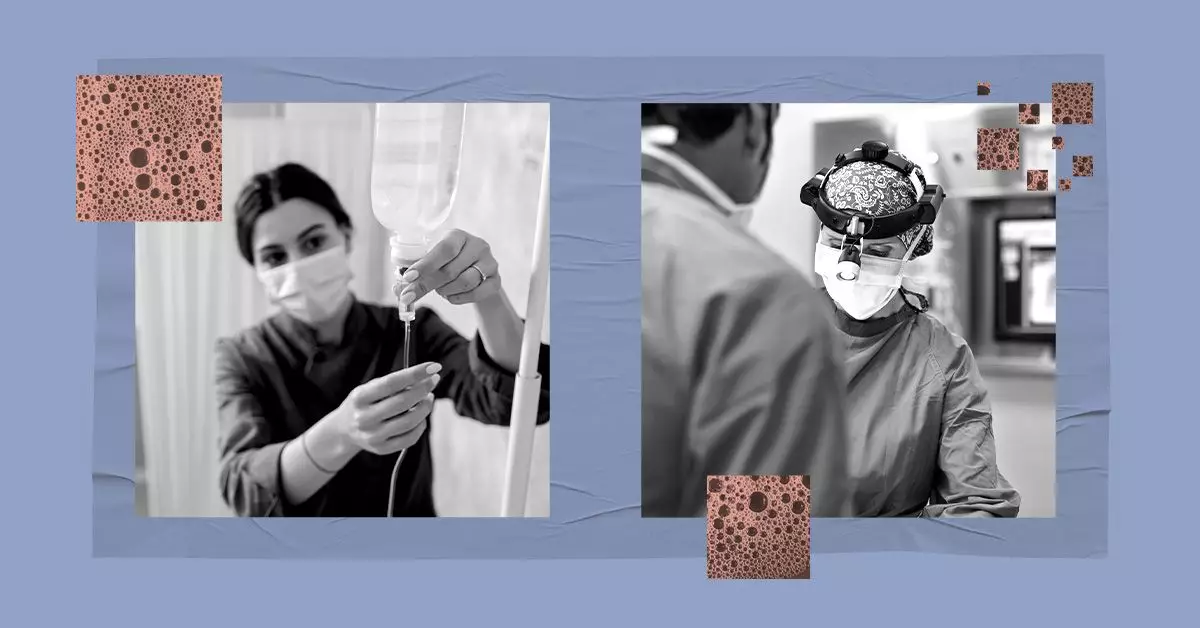Ewing sarcoma is a rare but highly aggressive form of cancer that predominantly affects the bone or soft tissues surrounding it. While this malignancy can strike at any age, it primarily manifests in children, adolescents, and young adults, presenting unique challenges both physically and emotionally. Given its complex nature, the treatment of Ewing sarcoma mandates a multidisciplinary strategy that incorporates the expertise of various medical specializations, including oncology, surgery, and radiation therapy. This article will explore the intricacies of treating Ewing sarcoma, the various modalities involved in care, and the importance of holistic patient support.
Treatment for Ewing sarcoma is not a one-size-fits-all approach. Instead, an effective plan must be tailored to the specific circumstances surrounding each patient, factoring in crucial variables like the cancer’s stage, the tumor’s size and location, as well as its metastatic nature—whether or not it has spread to distant sites in the body. The overarching goals of treatment are to eliminate as many cancer cells as possible while preserving vital functions and minimizing long-term complications.
Typically, the treatment landscape includes a combination of chemotherapy, surgical intervention, radiation therapy, and, in certain cases, stem cell transplantation. Each of these modalities plays a role in a treatment framework designed to achieve the best possible outcomes for the patient.
For patients diagnosed with localized Ewing sarcoma—where the cancer is contained to the primary site and its immediate surroundings—the treatment may initially focus on shrinking the tumor to enable more effective surgical removal. Here, chemotherapy plays a pivotal role. Common regimens often involve a combination of drugs designed to target rapidly multiplying cancer cells. This initial chemotherapy phase is critical as it not only lowers the tumor’s size but also addresses microscopic cells that could initiate future growth.
Following this phase, surgery is typically employed to excise the tumor completely. Surgeons aim for limb-sparing techniques whenever feasible, underscoring the importance of preserving the affected area while ensuring a thorough removal of cancerous tissues. The choice to proceed with surgery is generally made after evaluating the tumor’s response to chemotherapy and its potential for complete resection.
Radiation therapy can be an additional instrument in the treatment arsenal, particularly when surgical options are not viable, or when residual cancer cells remain post-surgery.
In cases where Ewing sarcoma has metastasized, the treatment approach takes on an even more systemic focus. Here, chemotherapy stands as the cornerstone, often deployed in multiple cycles to combat cancer that has spread to organs like the lungs or distant areas of bone. In addition, specific sites of metastasis may require targeting through localized radiation or select surgical interventions. High-dose chemotherapy paired with stem cell transplantation can also be considered for individuals with extensive metastatic disease, introducing a more aggressive approach to combat the cancerous spread.
The holistic management of metastatic Ewing sarcoma requires careful monitoring and adjustment of treatment plans to counter the evolving nature of the disease.
The landscape shifts further when patients face recurrent Ewing sarcoma, where the cancer returns after an initial treatment. The approach here varies based on the recurrence’s location and response to previous therapies. Options might include resuming chemotherapy, utilizing radiation therapy, or engaging in surgical interventions localized to the recurrence. Additionally, clinical trials present an exciting avenue for patients, as they provide access to cutting-edge therapies, including immunotherapy and targeted treatments aimed at specific genetic pathways in the cancer.
Since managing recurrent cancer can be particularly challenging, employing a multidisciplinary team ensures that care continues to be comprehensive and compassionate.
Living with Ewing sarcoma transcends the physical realm; patients and their families often face emotional, psychological, and practical challenges as well. It’s imperative for healthcare providers to recognize the need for comprehensive support systems. Resources such as psychological counseling, support groups, and rehabilitation services are essential in helping patients navigate their emotional and relational well-being during treatment.
Moreover, financial assistance programs can alleviate the treatment’s economic burden, allowing patients to focus on recovery without the added stress of cost-related concerns.
Treating Ewing sarcoma encompasses a multifaceted strategy that strives not only for the elimination of the disease but also for the maintenance of quality of life. By rigorously exploring the potential for tailored treatment regimens that include chemotherapy, surgery, radiation therapy, and emerging therapies, healthcare teams can enhance the likelihood of positive outcomes. The combination of innovative treatment protocols and holistic support paves the way for improved survival rates and psychological resilience in patients battling this formidable cancer. Future research and clinical trials continue to hold promise for advancing the treatment landscape, emphasizing the importance of collaboration among specialists to offer the best possible care for those affected by Ewing sarcoma.

